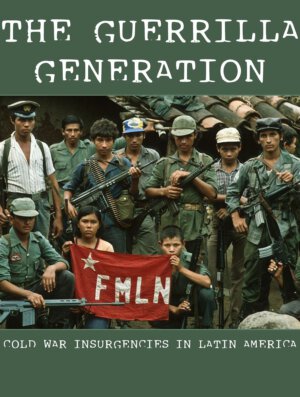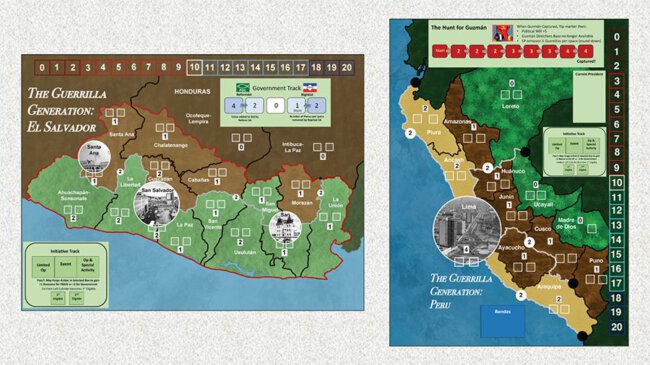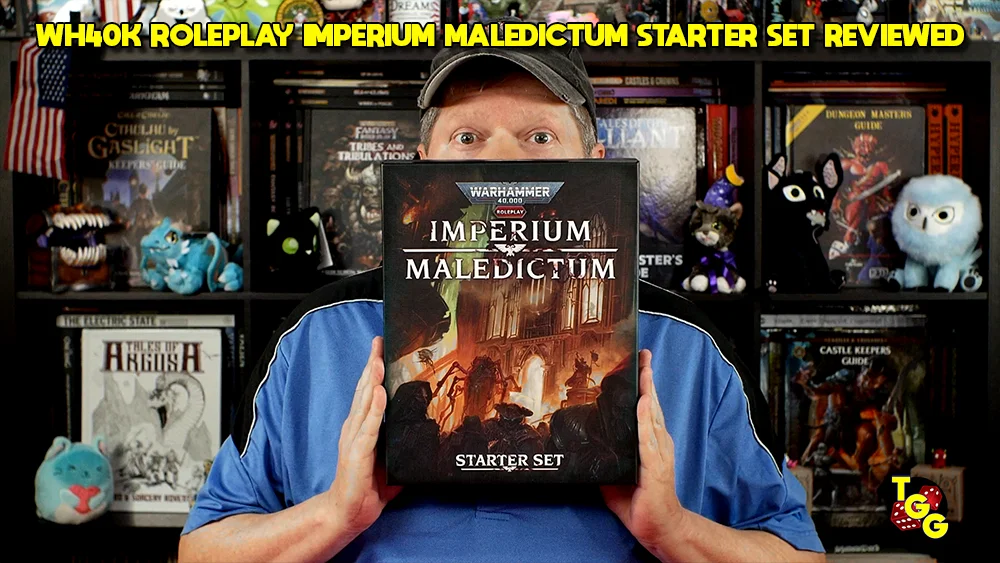
About the game from the designer:
The Guerrilla Generation: Cold War Insurgencies in Latin America is the second COIN multipack, containing four separate games exploring a series of thematically related insurgencies. Building on the The British Way, this new multipack allows players to explore variations in insurgent groups’ organizational structures, strategies, and relationship with civilians, across four insurgencies in Central and South America between 1968 and 1992. During this part of the Cold War era, Latin America experienced an incredible number of different insurgent groups, many inspired by the Cuban Revolution featured in Cuba Libre, ranging from popular backed rural insurgencies, flexible urban guerrillas, externally sponsored raiders, and brutal ideologically rigid groups. This multipack features a game exemplifying each of these types of insurgencies, to offer players the chance to compare different approaches to rebellion. The four games included in the multipack cover conflicts in Uruguay (1968-1972), Nicaragua (1979-1990), El Salvador (1979-1992), and Peru (1980-1992). The Nicaragua and El Salvador games can also be played in a linked campaign scenario, which combines them into a simultaneous side-by-side experience.
The Guerrilla Generation is first and foremost designed to provide an educational experience on the specific conflicts in the pack and to push players to think more broadly about variation in how insurgent groups operate. The design of the games required extensive research utilizing works by historians, political scientists, area specialists, human rights reports, and local accounts to best capture the strategies of the armed actors in each conflict and their effects on the local population. Armed actors, represented by roles taken on by players, often adopted strategies of intentionally targeting civilians to coerce them to their side or weaken the opposing armed group. The Salvadoran military used scorched earth tactics and systematic bombing of guerrilla zones, as described in the quote above. The military in Uruguay utilized extensive torture to crush the Tupamaros before going on to crush the democracy itself. Insurgents such as the Contras and Shining Path deliberately terrorized civilians to advance their goals. Engaging in an interactive exploration of these strategies can be deeply uncomfortable; however, I would argue that interacting with these strategies is central to understanding the conduct of both these specific historical conflicts and unfortunately many contemporary ones.
- Space 1999: The Roleplaying Game Receives a Free Quickstart - Apr 4, 2025
- PWYW for the Temple of the Beggar-King Adventure for OSE Advanced Fantasy - Apr 4, 2025
- Score Savings with the Feng Shui Ammo Pack - Apr 4, 2025



















